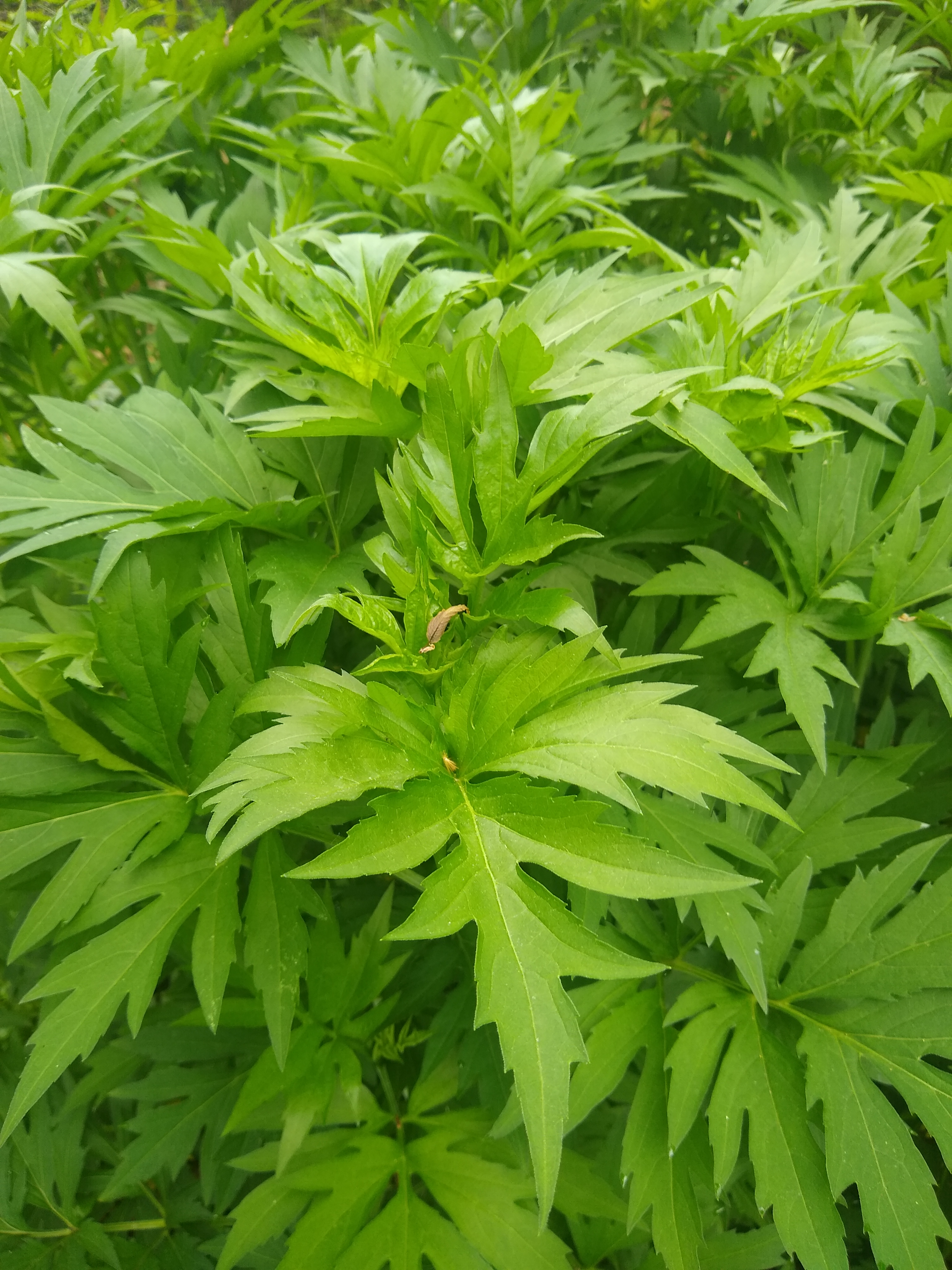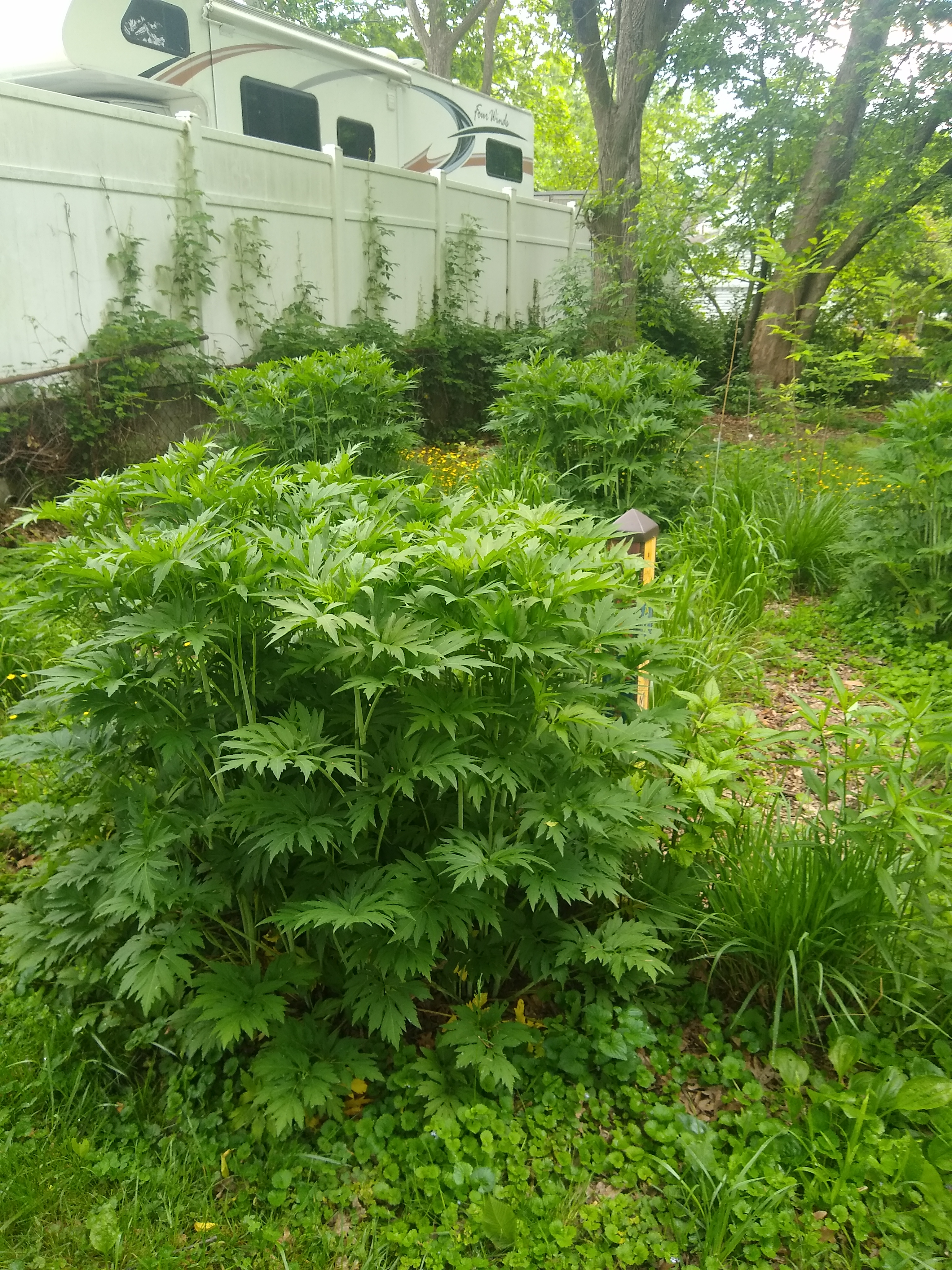It’s delicious, nutritious, and may already be growing in your yard!
by Gabe Popkin
A few years ago I got a clump of a plant called cutleaf coneflower from a neighbor. I planted it and it took off. Once it started spreading, I dug up clumps from my own yard and started new patches elsewhere. I then started regretting I had let it take up so much space and began trying to rein it in.

Then, this spring, something happened that has totally upended my relationship with this plant: I learned it was not just a pretty flower and pollinator attractor, but also actual food. And really good food at that! The leaves are rich, complex and peppery in flavor, the stalks somewhat celery-like. It can be eaten raw but really comes into its own when cooked. It’s become a regular part of my diet.
First, a bit about the name. “Cutleaf coneflower” is the horticulture industry’s name for the plant, but long before that industry existed, it was known as sochan. The name “sochan” is derived from the Cherokee word for the plant.
And sochan’s story is remarkable. Its native range is huge, covering much of the present-day United States and Canada. I suspect it’s so widespread in part because people have been cultivating it and moving it around for far longer than we have documentation. It’s traditionally been an important spring green, providing essential nutrition when little else was growing. It’s full of vitamins and nutrients and can absolutely hold its own, in terms of both flavor and nutrition, with kale, spinach or any of our other culinary greens.
Like so much of indigenous culture, sochan culture was largely wiped out and forgotten after Europeans arrived. It seems that only the small Eastern Band of Cherokee Indians who remained in western North Carolina have held onto it. But things are changing, for the better. A few years ago, the Eastern Band negotiated an agreement with the National Park Service to begin foraging sochan in Great Smoky Mountains National Park, which of course is land they once controlled and still claim.
Meanwhile, as cutleaf coneflower (Latin name Rudbeckia laciniata), the plant has become popular among gardeners. Its leaves have a distinct shape with sharply angled lobes, hence the common name, and stalks shoot up to eight feet tall, topped by brilliant, abundant flowers throughout the summer. Bees love it. It requires virtually no care. What more could you ask? (As long as you don’t mind it taking over your yard through seeding and underground spreading, or are prepared to keep it under control.)
I would guess the vast majority of people growing this plant today are oblivious to its food value. I was until I borrowed the book Incredible Wild Edibles by foraging guru Sam Thayer from Steve McKindley-Ward, another friend here in the neighborhood who has been one of the core volunteers at the food forest. Steve had made a note about sochan. I read the description and realized I had it in my yard – lots of it! (You can also check out this short video about sochan from the inimitable Alexis Nikole Nelson, aka the Black Forager.)
Sochan is also growing in the food forest. Several robust clumps make up part of the meadow maze on the park’s north edge. There are apparently at least two ways to harvest, according to Desirae Kissell, Conservation Outreach Coordinator with the Eastern Band of Cherokee Indians, who I spoke with recently. You can snap off the leaf stalk near the base, or just take the “turkey foot,” a name for the inner part of the leaf. Don’t just pick from one spot; rather, distribute your gathering among the different clumps, and different parts of each clump. I never pick more than the equivalent of one supermarket or farmer’s market bunch of greens at one time. Don’t worry, it’s not going anywhere, and within a few days it will replace whatever you pick, so you can come back for more. Research has shown that sochan harvested according to traditional methods produces more seed than patches that are left alone!
Like most greens, sochan benefits from being fried in oil or fat; if you eat bacon, sochan in bacon grease is amazing. Olive oil works fine, too. For ideas on how to prepare it, and how to differentiate it from lookalike plants, check out this website.
Later in the summer, when it flowers, the leaves and stalks become thicker and tougher, and are less good for eating. That’s the time to turn it over to the pollinators and sit back and enjoy the show.
If you’re interested in growing sochan, it’s easily found at nurseries that sell native plants, or if you live in the neighborhood, I can dig up a clump for you. Or you might discover you already have it happily growing in your yard. Either way, happy eating!

Gabe Popkin is a long-time Mount Rainier resident, a co-founder of the Mount Rainier Food Forest and an independent science and environmental writer
Leave a Reply